This listing presents a fresh cutting of very popular Hoya Carnosa. This cutting has new root growth which you can see in the photos.
Hoya carnosa, commonly known as the Wax Plant or Hindu Rope Plant, is a popular and well-loved species of Hoya. Hoya species are tropical and subtropical plants known for their waxy, succulent leaves and clusters of fragrant, star-shaped flowers. Here are some key characteristics and care tips for Hoya carnosa:
Key Characteristics:
- Foliage: Hoya carnosa is characterized by its thick, waxy, and somewhat fleshy leaves. The leaves are typically dark green and may have a glossy appearance. They are usually oval or elliptical in shape.
- Flowers: Like other Hoya species, Hoya carnosa produces clusters of small, fragrant, star-shaped flowers. The flowers are often pink or white and have a sweet and pleasant fragrance. The blooms are typically borne in clusters, adding to the plant's decorative appeal.
- Growth Habit: Hoya carnosa is a vining or trailing plant. It can grow several feet in length over time and is well-suited for hanging baskets or pots with trellises. Its trailing vines make it a beautiful addition to any indoor space.
Care Tips:
- Light: Provide bright, indirect light for your Hoya carnosa. It can tolerate some morning sun but should be protected from intense afternoon sunlight to prevent leaf scorch.
- Temperature: Maintain a warm and consistent temperature for this Hoya, ideally between 70-80°F (21-27°C). Protect it from cold drafts and temperatures below 50°F (10°C).
- Watering: Water your Hoya carnosa when the top inch of the soil is dry. Allow the soil to dry out between waterings, as Hoyas are sensitive to overwatering. Be especially cautious with water during the dormant season.
- Humidity: Hoyas appreciate higher humidity levels. You can increase humidity by misting the plant, using a humidity tray, or placing a humidifier nearby.
- Soil: Use a well-draining potting mix suitable for succulents or cacti. A mix of perlite and peat moss can also work well.
- Fertilization: Feed your Hoya carnosa with a balanced, water-soluble fertilizer diluted to half or quarter strength during the growing season (spring and summer). Reduce or eliminate fertilization during the dormant period (fall and winter).
- Pruning: Prune the plant as needed to control its size and shape. Pruning can also encourage bushier growth and prevent legginess.
- Repotting: Hoya plants typically do not need frequent repotting. Repot only when the plant has outgrown its container or its roots have become too crowded.
- Pest Management: Keep an eye out for common houseplant pests like mealybugs, aphids, and spider mites. Treat any infestations promptly.
Hoya carnosa is a classic and relatively low-maintenance houseplant that can add beauty and charm to your indoor space. With the right care, it can thrive and become a cherished part of your plant collection.
TAKING CARE OF YOUR FRESH CUTTING:
Taking care of a fresh Hoya carnosa cutting is an important step in the propagation process to ensure the cutting roots successfully and eventually grows into a healthy plant. Here's a step-by-step guide on how to care for a fresh Hoya carnosa cutting:
Materials Needed:
- Fresh Hoya carnosa cutting
- Clean, sharp pruning shears or scissors
- A small pot or container
- Well-draining potting mix (succluent or cactus mix works well)
- A plastic bag or a clear plastic dome
- A spray bottle with water
Steps:
- Prepare the Cutting:
- Take a clean, sharp tool (pruning shears or scissors) and cut a healthy section of the Hoya carnosa stem. The cutting should be about 4-6 inches long and have at least one or two leaf nodes (where leaves and roots will emerge).
- Let the Cutting Callus:
- Place the fresh cutting in a dry, well-ventilated area for a day or two to allow the cut end to callus over. This helps prevent rotting when you plant it.
- Plant the Cutting:
- Fill a small pot or container with well-draining potting mix. Make a hole in the soil with your finger or a stick.
- Insert the cut end of the Hoya carnosa cutting into the hole, making sure at least one leaf node is buried in the soil.
- Water the Cutting:
- Water the cutting lightly to settle the soil around it. Make sure the soil is evenly moist but not soggy. You can use a spray bottle to mist the soil surface.
- Create a Humid Environment:
- Place the pot and cutting inside a clear plastic bag or under a clear plastic dome. This will create a humid environment that encourages root development. Leave the bag or dome slightly open to allow for some air circulation.
- Provide Indirect Light:
- Place the pot in a location with bright, indirect light. Avoid direct sunlight, as it can be too harsh for the fresh cutting. A north-facing window or a spot with filtered light is ideal.
- Maintain Humidity:
- Check the cutting periodically to ensure the soil remains lightly moist, and the humidity inside the bag or dome is maintained. You can mist the cutting or the inside of the bag if needed.
- Monitor Root Growth:
- Over the next several weeks, the cutting will develop roots. You can gently tug on the cutting to check for resistance, which indicates that roots have formed.
- Transplanting:
- Once the Hoya carnosa cutting has established a good root system (usually after several weeks to a few months), you can transplant it into a larger pot with well-draining soil suitable for Hoyas. Gradually acclimate it to normal room conditions.
- Regular Care:
- Treat the rooted cutting like a mature Hoya carnosa, providing bright, indirect light, regular but careful watering, and periodic feeding with a balanced, water-soluble fertilizer.
Propagation by cuttings can be a rewarding way to expand your collection of Hoya carnosa plants. With patience and proper care, your fresh cutting will grow into a beautiful and healthy plant.
Only logged in customers who have purchased this product may leave a review.
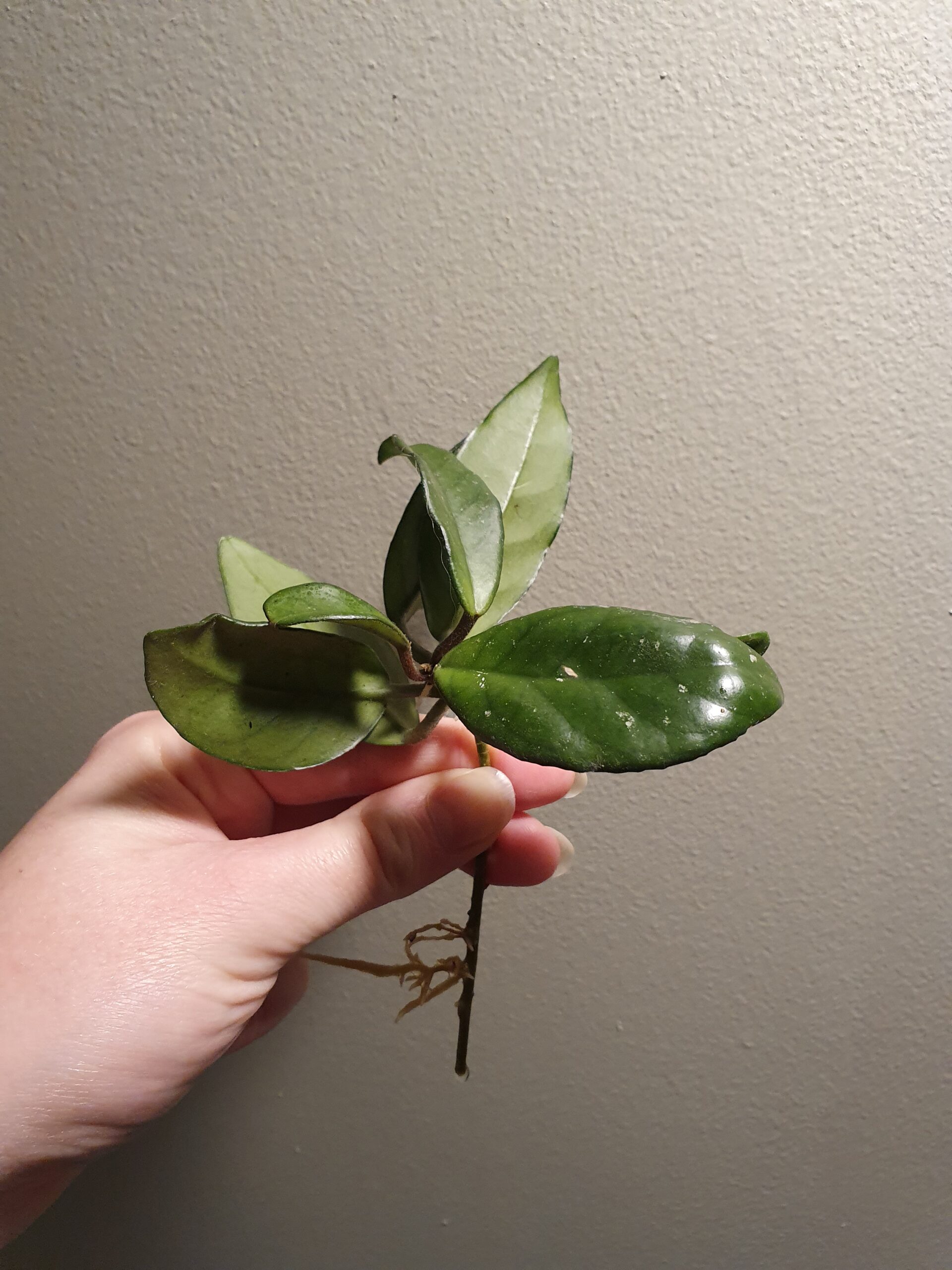
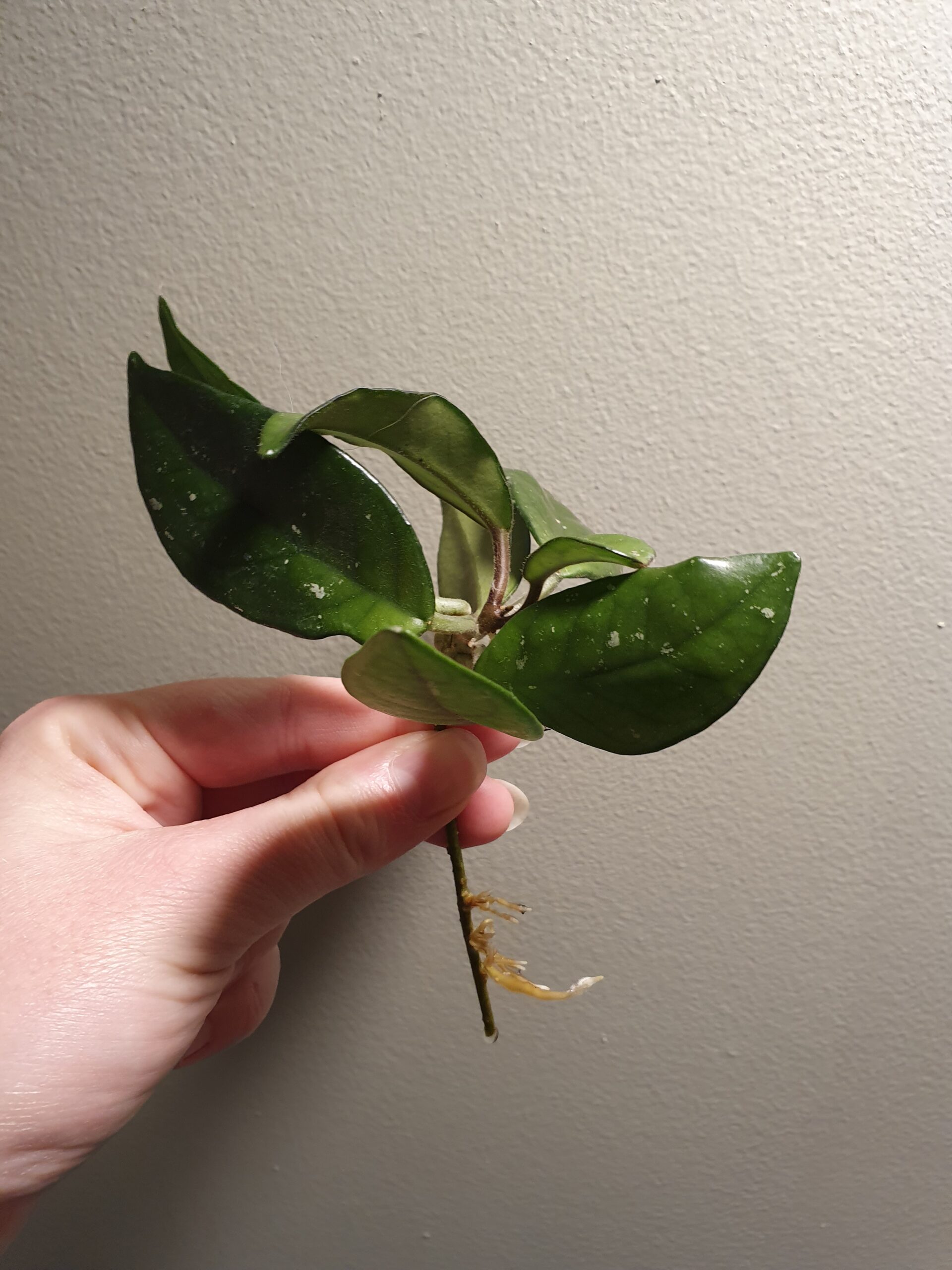
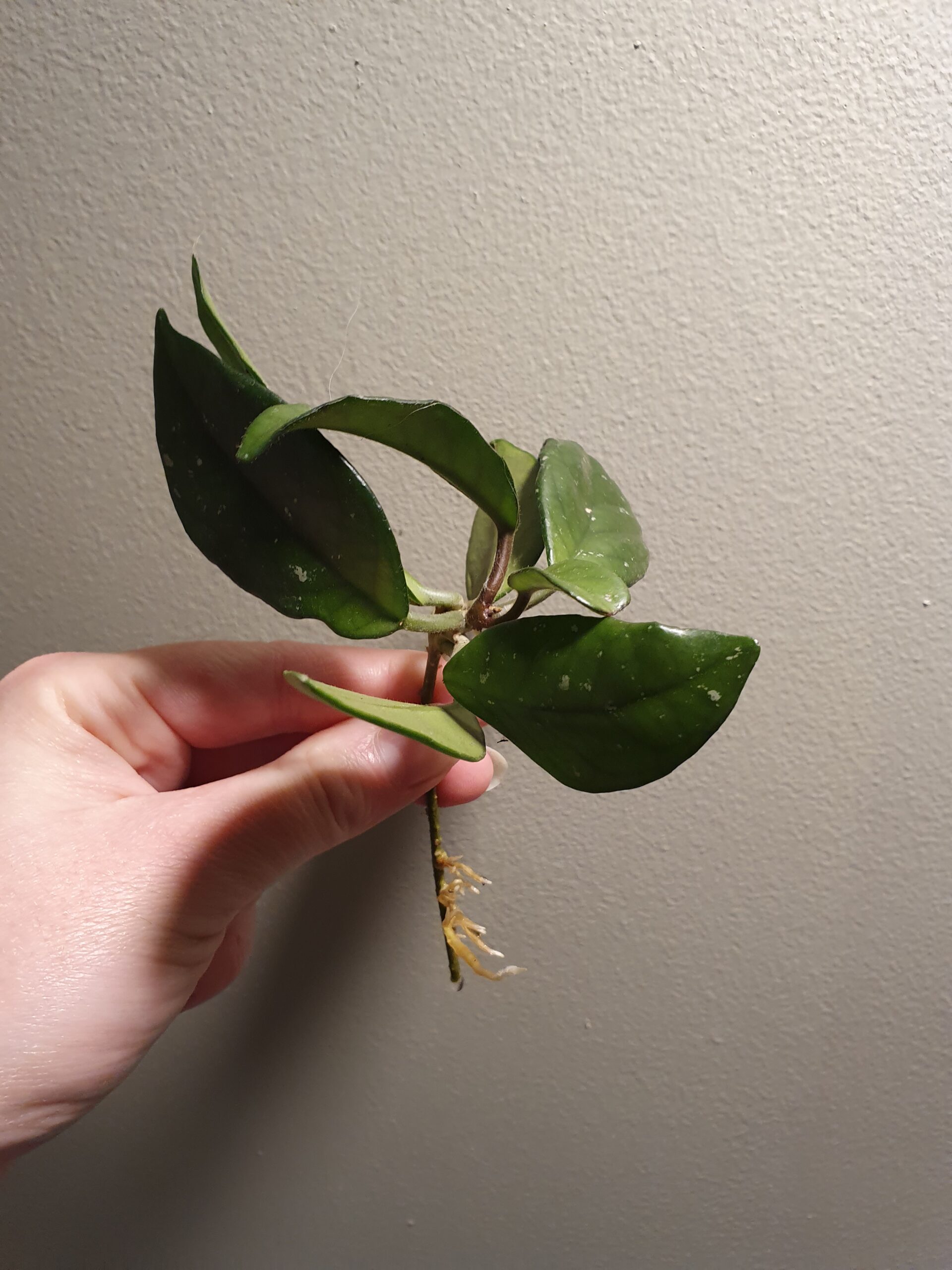
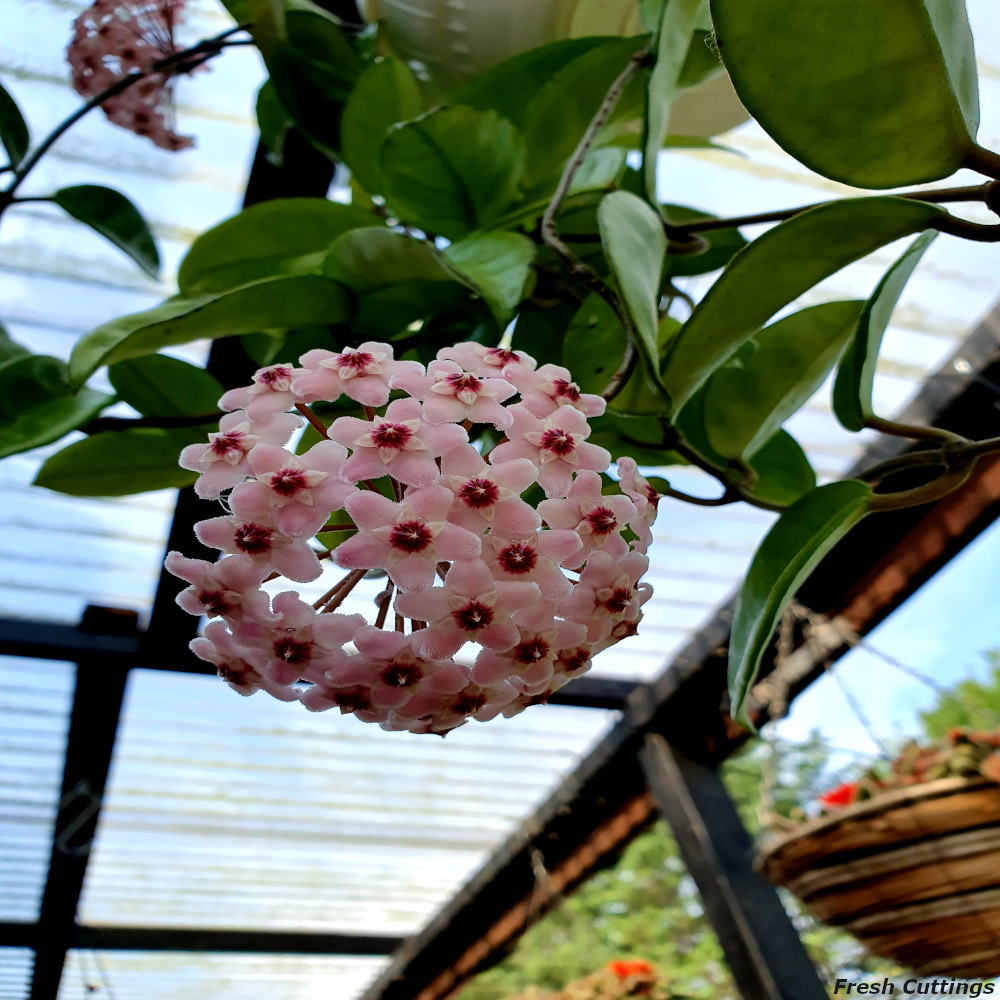
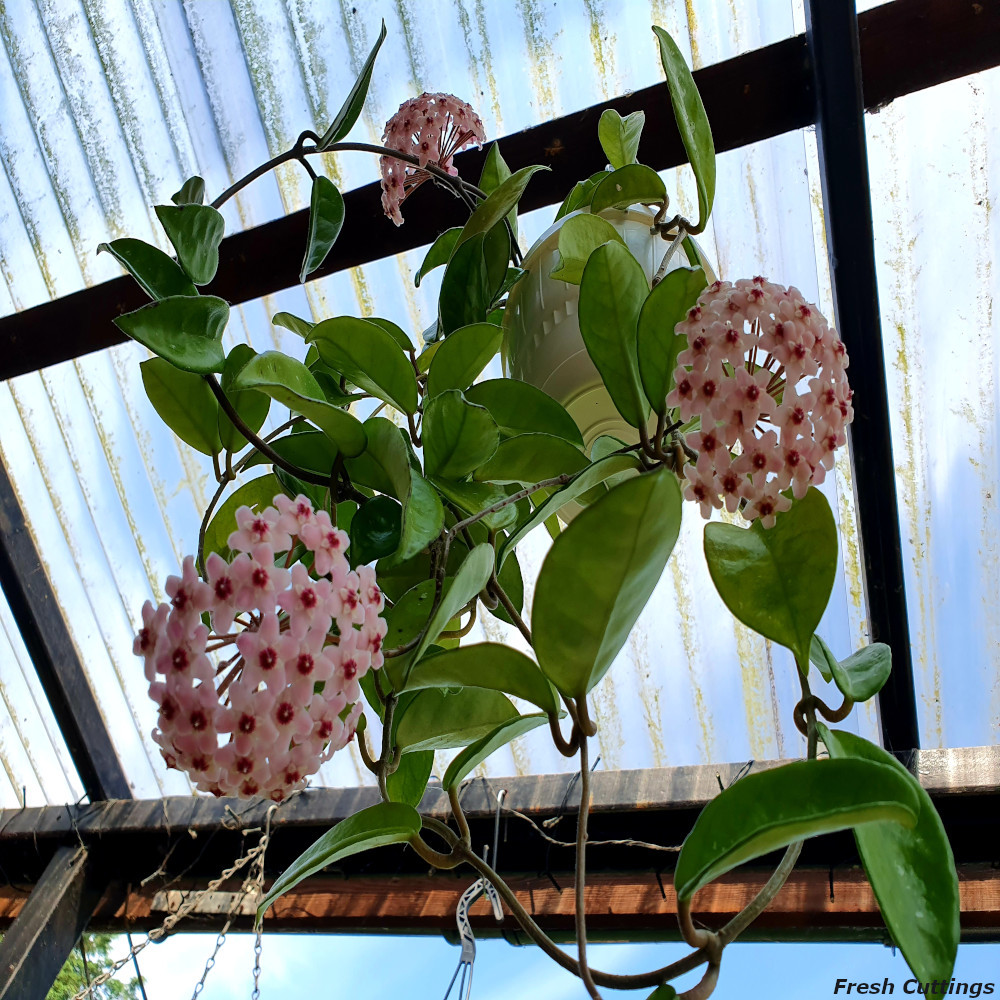
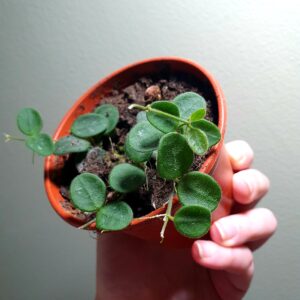
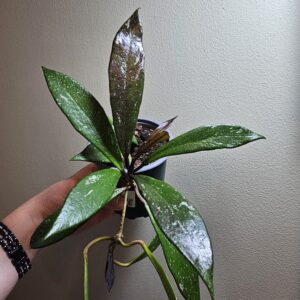
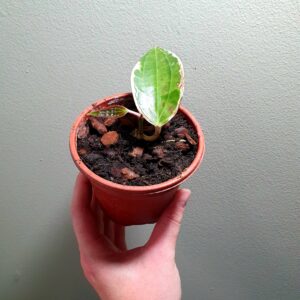
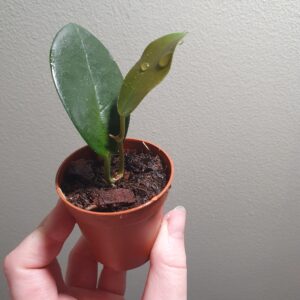


Reviews
There are no reviews yet.